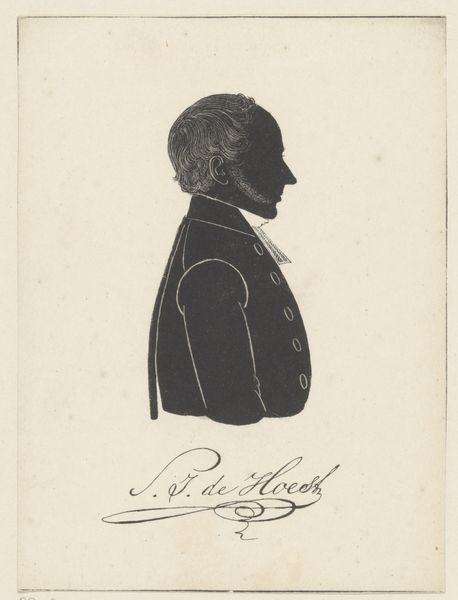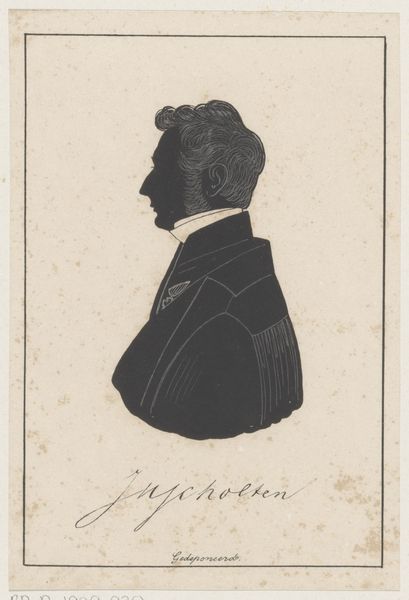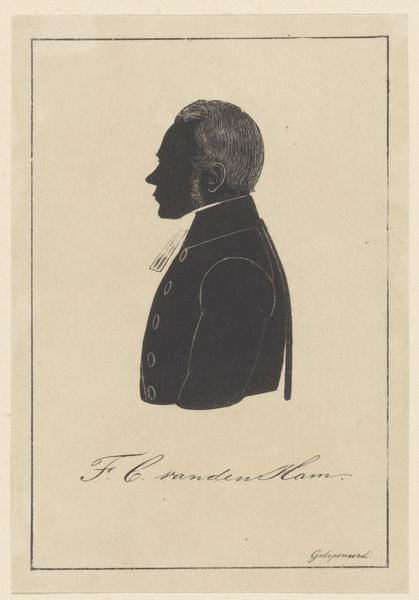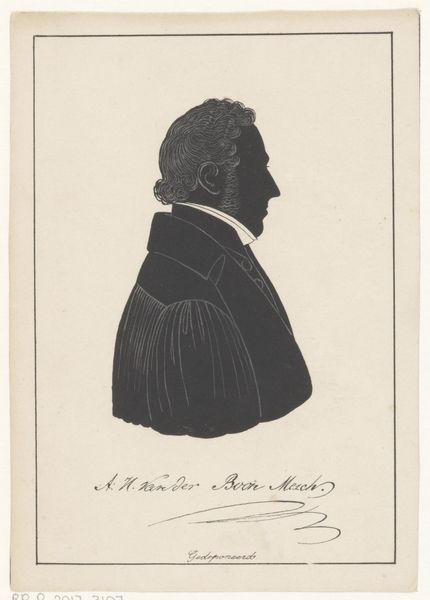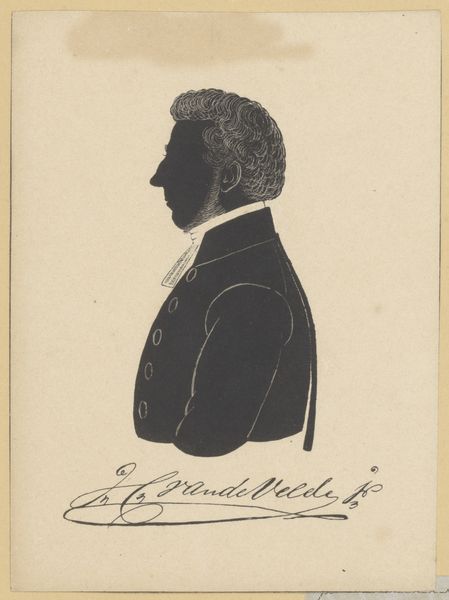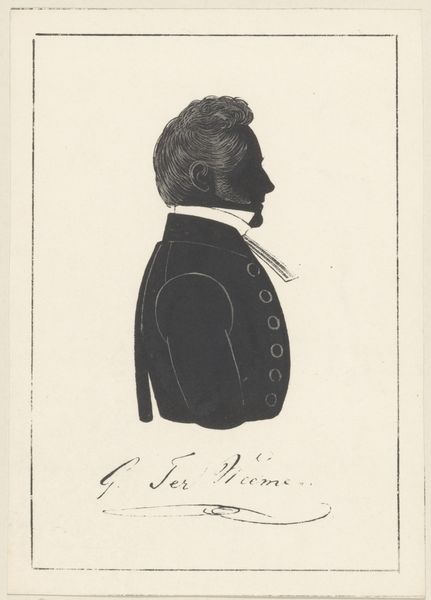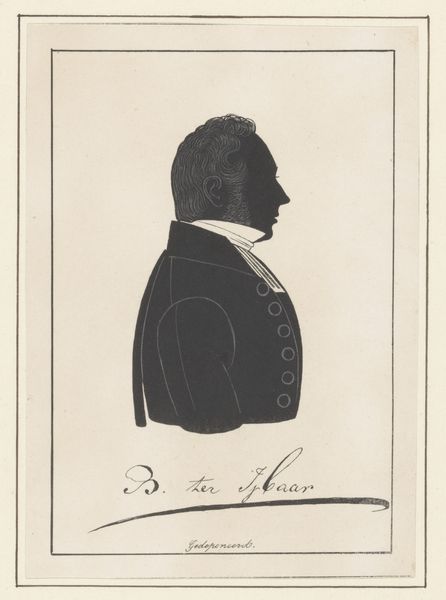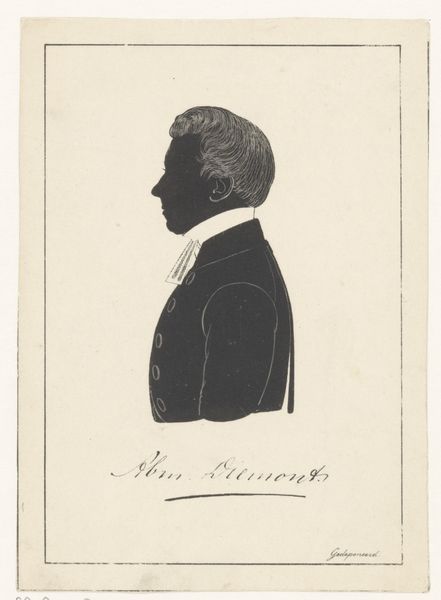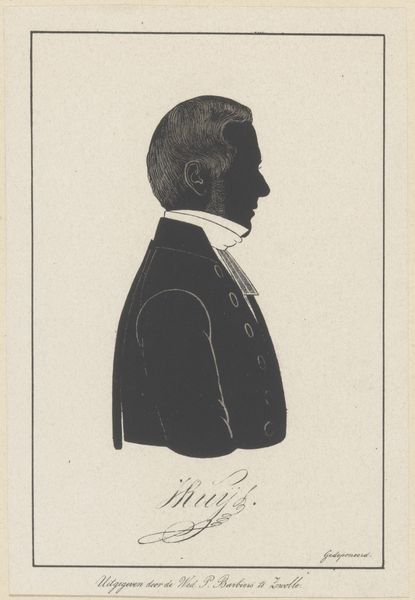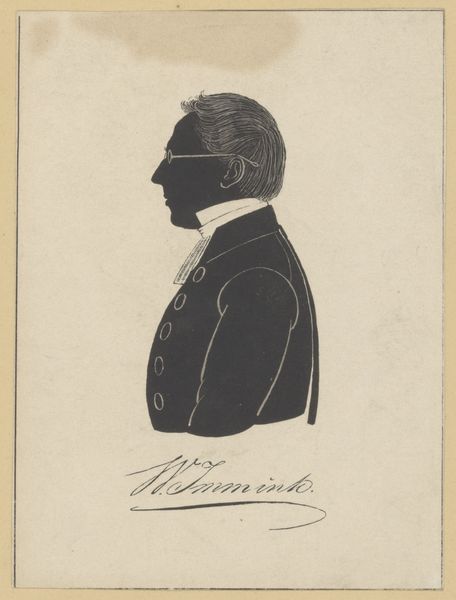
drawing, print
#
portrait
#
drawing
#
aged paper
#
light pencil work
#
16_19th-century
# print
#
romanticism
Dimensions: height 151 mm, width 106 mm, height 302 mm, width 241 mm
Copyright: Rijks Museum: Open Domain
Curator: Before us, we have "Silhouetportret van Rutger Rodenburg-Mentz," attributed to Pieter (IV) Barbiers, created sometime between 1809 and 1848. Editor: Striking, isn't it? There's an immediate formality that comes through, despite its stark simplicity. The crispness of the cut, the aged paper, everything feels very deliberate, controlled. Curator: Indeed. These silhouette portraits, particularly popular during that period, reflect more than mere likeness. Think about the power dynamics at play; consider that silhouettes served as affordable alternatives to painted portraits, enabling a broader spectrum of society to participate in visual representation. It's about democratization through accessible technology. Editor: And the making of these things is so interesting, right? How the process itself—reducing a person to a shadow, then meticulously cutting and pasting this paper—conveys this person. Consider how labor and skill interact to transform a person's likeness into a commodity, a possession. Curator: Precisely! There’s an inherent abstraction, isn't there? It prompts reflection on what constitutes identity, on the very process of crafting representations and memories. What social codes are revealed by reducing an individual to a profile? Who had access, who did not, and why? Editor: Yes, the level of craft becomes important to this dialogue. The clean edges speak of precision tools. And the uniform density of the fill suggests carefully sourced paper with no visible fibers disrupting that ideal smoothness, or flaws interrupting the viewing process. There is meaning produced from both labor and material conditions of its production. Curator: So, by shifting the gaze, we engage in the socio-historical forces behind the artwork itself. Who was Rutger Rodenburg-Mentz? Why did he choose this particular mode of representation? What values does the portrait subtly reinforce or challenge? What other types of materials were accessible and were therefore rejected during this artistic endeavor? Editor: Agreed. Examining material culture moves beyond simply viewing artwork as an aesthetic achievement but as a physical product embedded in the social and material world. This silhouette then allows for critical inquiry. Curator: Thank you. I appreciate the nuances brought to light by considering its place in this intricate web. Editor: My pleasure, I feel it adds greater nuance to our experience.
Comments
No comments
Be the first to comment and join the conversation on the ultimate creative platform.

